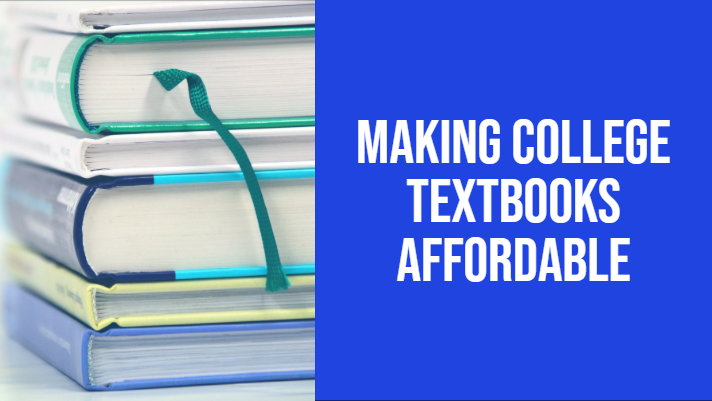
It’s no secret that higher education in America is pricey. Tuition is on the rise, and debt is skyrocketing. With more students relying on loans to pay for school, the average borrower now graduates with more than $26,000 in debt.
We need to do more to solve this crisis. But in the meantime, one key way to bring down the overall cost of higher education is to cut down on the nickel-and-diming students are facing just to participate in class.
You see, along with covering tuition, many students struggle to pay for school supplies that are required to succeed. Two thirds even skip buying books in the first place, according to a report from U.S. PIRG Education Fund. And if they can’t pay those costs, their grades are sure to suffer.
Our analysis estimates $3 billion of student aid is spent on buying class materials. And with a handful of major textbook publishers controlling the marketplace, we can expect prices to continue to rise. This control allows them to hike up costs and lock out affordable alternatives by employing access codes (where students have to pay to submit homework) or by publishing frequent new editions.
Avoid paying high textbook prices
If you’re a student, there are several ways you can avoid paying exorbitant textbook costs. For one, you should consider the price tag on materials when registering. Find classes that don’t require books, have no-cost resources such as free open textbooks, or require low-cost (under $40) materials. Several states require price transparency at class registration, so this information is sometimes easily accessible. When possible, avoid class sections that require the use of access codes, which force you to pay additional fees to submit homework for courses.
For those classes where you cannot sidestep important materials, be aware of your college or university’s textbook policies. At some schools, publishers are allowed to automatically charge you for materials. Pay attention because you can usually opt out of these billing programs if you catch them quickly enough. This will allow you to seek out more affordable alternatives such as used books.
Seek affordable textbook alternatives
Oftentimes, more affordable alternatives are available. Your school’s library may have copies of required textbooks on reserve for free. Students have also created Facebook groups or other “for-sale” pages at many schools, and you can compare sites like Amazon to your institution’s bookstore to find the best deal. You should invest some time shopping around for the best deal if you want your own copy to keep. You can also consider a digital etext or a rental book from sites like Chegg. Before doing that, compare rental costs to how expensive the book would be if you were able to resell it for 50 percent of its value.
Finally, ask your professors to switch to open textbooks — which are available at either no cost online or for under $40 in print. They are written by professors, just like regular textbooks, but are published under an open copyright that makes them freely available to the public. By switching to open textbooks in introductory classes, your professors could save college students billions each year.
It’s also important to remember that textbooks aren’t the only financial threat facing students. Some debit cards marketed on campus come with exorbitant fees. And, expensive electronics can seriously ding your wallet. For other money-saving tips, including how to shop for cheaper, refurbished electronics, check out U.S. PIRG’s full back-to-school guides.
At the end of the day, for students to avoid the burden and distractions of these weighty costs, policies must be put in place to end these unnecessary expenses. But until further action is taken, these back-to-school tips are a surefire way for students to save hundreds of dollars.
__________________________________________________
Today’s guest post is from Make Higher Education Affordable campaign director Kaitlyn Vitez of U.S. PIRG, The Federation Of State Public Interest Research Groups. U.S. PIRG is a federation of independent, state-based, citizen-funded organizations that advocate for the public interest.
